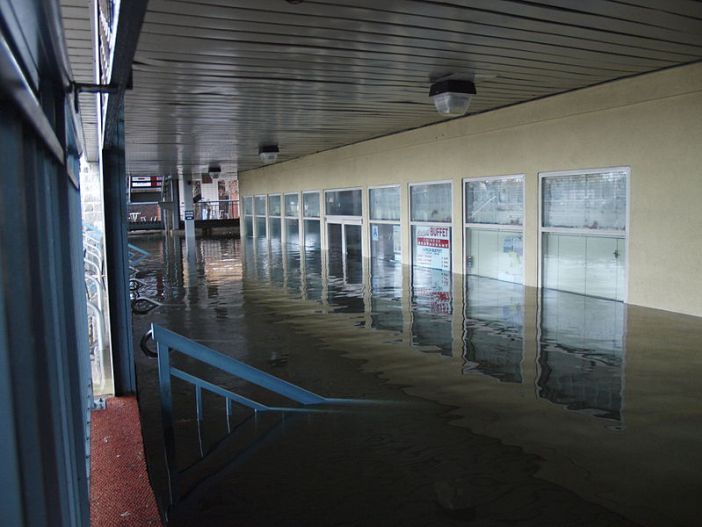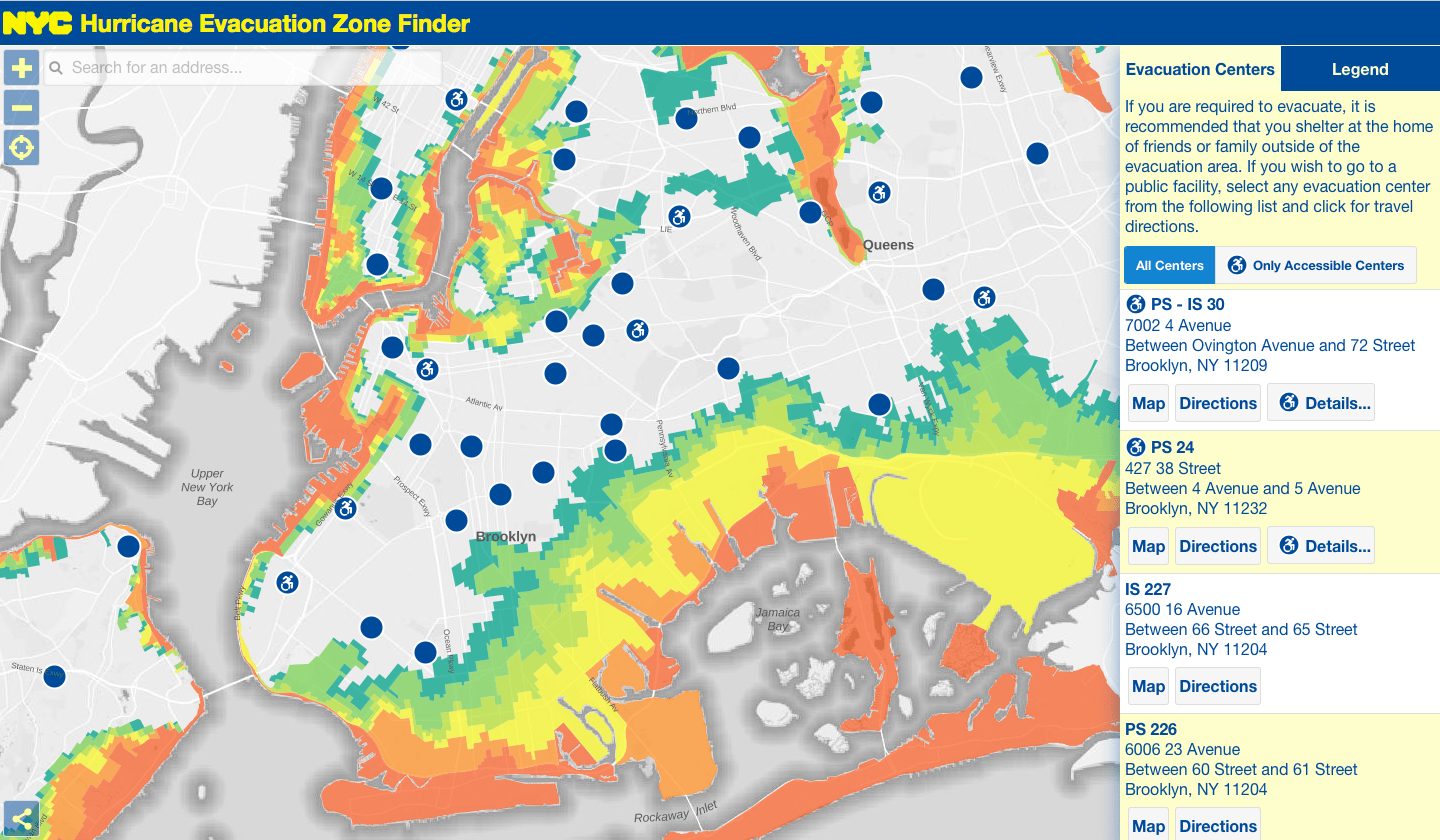5 Years Since Sandy: How To Prepare For The Next Big Storm


BROOKLYN – October 29 marks the five year anniversary of Hurricane Sandy hitting New York City. The powerful storm caused the deaths of 43 New York City residents—seven fatalities were in Brooklyn, and caused $19 billion in economic damage.
The devastation recent storms like Harvey, Irma, and Maria have caused in the Caribbean, Florida, Texas, and Puerto Rico, forces us to question how ready we would be if another big storm hits ground in New York.
Our new reality is we need to have an emergency plan, and while we don’t all necessarily have to take extreme measures and join the prepper movement (Americans actively preparing for a catastrophe), it’s a good idea to be prepared just in case.
Below is a list of links and resources to help you prepare yourself and your family in the event of an emergency. Keep in mind some of the links are broad and aim to cover all sorts of emergencies, from hurricanes, earthquakes, wild fires, tornadoes, and whatever else may come our way, so use them as a guide and take from them what works best for you.
There are two scenarios to consider when devising a plan for yourself and your family, according to the New York Times—evacuating or sheltering in place.
For an efficient evacuation, the paper suggests loading up a backpack (one for each family member) with supplies. To shelter in place safely and comfortably, the paper advises stocking up on enough provisions to sustain your family for at least 72 hours.
In both cases, some of the necessary supplies include: clothing (don’t forget underwear and socks), food, water, flashlights, batteries, a portable radio, a first-aid kit, medicine, and cash. The Times also recommends having baby wipes, work gloves, a multipurpose tool (like a Swiss Army Knife), and a hardcopy list of important contacts and their info on hand. It’s also a good idea to put any important documents (see a list of documents below) into a resealable storage bag or another type of waterproof, portable container.
The American Red Cross offers suggestions on what to pack into an “easy-to-carry” emergency preparedness kit “that you can use at home or take with you in case you must evacuate.” The minimum basic supplies the Red Cross recommends include:
- Water: one gallon per day/per person (3-day supply for evacuation, 2-week supply for home)
- Food: non-perishable, easy-to-prepare items (3-day supply for evacuation, 2-week supply for home)
- Flashlight
- Battery-powered or hand-crank radio (a NOAA Weather Radio is recommended)
- Batteries
- First aid kit
- Medications (7-day supply) and medical items
- Multi-purpose tool
- Personal hygiene and feminine hygiene items
- Cell phone with chargers
- Family/emergency contact information
- Extra cash
- Emergency blanket
- Map(s) of the area
- Copies of personal documents (medication list and pertinent medical information, proof of address, deed/lease to home, passports, birth certificates, insurance policies)
The following items would also be good to have:
- Two-way radios
- Manual can opener
- Extra set of car keys and house keys
The Red Cross also suggests considering each individual family member’s specific needs such as: medical supplies (hearing aids with extra batteries, glasses, contact lenses, syringes, etc.); baby supplies (bottles, formula, baby food, diapers); pet supplies; and activities for children.
Additional items the Red Cross recommends keeping at home or in your emergency preparedness kit include: a whistle, surgical masks, matches, rain gear, towels, work gloves, tools/supplies for securing your home, extra clothing (hat and sturdy shoes), plastic sheeting, duct tape, scissors, household liquid bleach, blankets or sleeping bags, and entertainment items.
The NYC Emergency Management website also has helpful hurricane safety tips. Before a hurricane, the site suggests that each resident “Know Your Zone.” Areas of the city are divided into six evacuation zones—1 through 6—based on the risk of storm surge (water pushed toward the shore by the force of the winds moving around the storm) flooding.

City officials may order residents to evacuate depending on the hurricane’s track and projected storm surge. Use the Hurricane Evacuation Zone Finder or call 311 to find out if you are in an evacuation zone. If you live in an evacuation zone, have a plan for where you and your family will go if an evacuation order is issued for your area.
If you need to evacuate, the NYC Office of Emergency Management (OEM) recommends sheltering with friends or family outside of the evacuation area, however if you prefer to go to a public facility, click here for a list of (and directions to) evacuation centers throughout the city.

Should you need to evacuate your home, unplug appliances before you leave to prevent damage in case of an electrical power surge.
Develop a plan with your family that outlines what to do, how to communicate, and how to meet in the event of a hurricane. OEM suggests having a contact and meeting place for your household. OEM offers a My Emergency Plan workbook to help New Yorkers, especially those with disabilities and access and functional needs, devise an emergency plan. There is also a workbook to help create emergency plans for pets and a kids guide.
The OEM also provides helpful recommendations for what to pack in a Go Bag. The list is similar to the one above from the American Red Cross, but suggests including copies of credit/ATM cards, cash in small bills, and a note pad and pen.
OEM also provides a handy list of items to pack for your pets. Along with a collar, leash, ID, food and water (for 3 days), collapsible carrier, and bowls, the list includes:
- a current color photograph of you and your pet together (in case you are separated)
- copies of medical records that indicate dates of vaccinations and a list of medications your pet takes and why he/she takes them
- proof of identification and ownership, including copies of registration information, adoption papers, proof of purchase, and microchip info
- a physical description of your pet, including species, breed, age, sex, color, distinguishing traits, and any other vital information about characteristics/behavior
- an animal first aid kit, including flea and tick treatment and other items recommended by your veterinarian
- a muzzle and sturdy leash (note: nylon muzzles should only be used temporarily as they can restrict a dog’s ability to pant)
- a cotton sheet to place over the carrier to calm your pet
- comforting toys or treats
- litter, litter pan, and litter scoop
- plastic bags for clean-up
Finally, OEM has tips on how to prepare your home when a hurricane watch is announced.
- Bring inside loose, lightweight objects, such as lawn furniture and garbage cans
- Anchor objects unsafe to bring inside, like gas grills or propane tanks (turn off propane tanks)
- Close windows and outside doors securely
- Move valuable items from basements to upper floors (in case of flooding)
- Charge cell phones
- Fill your car and generator with fuel
- Move your vehicle to higher ground if you live in an evacuation zone
- Turn your refrigerator and freezer to a colder setting (if you lose power, items in the refrigerator will stay cooler longer)
- Fill your bathtub and other large containers with water
- Refill prescription medications
- Take out extra cash
- Place valuables into waterproof containers or plastic bags
- Click here for more info on how to prepare homes and businesses for weather emergencies and power outages
Check in on older friends, relatives, and neighbors, and people with disabilities/access/functional needs, or health conditions. Help them prepare and evacuate if necessary.
What did we miss? Let us know what you would recommend to prepare for a major storm.



